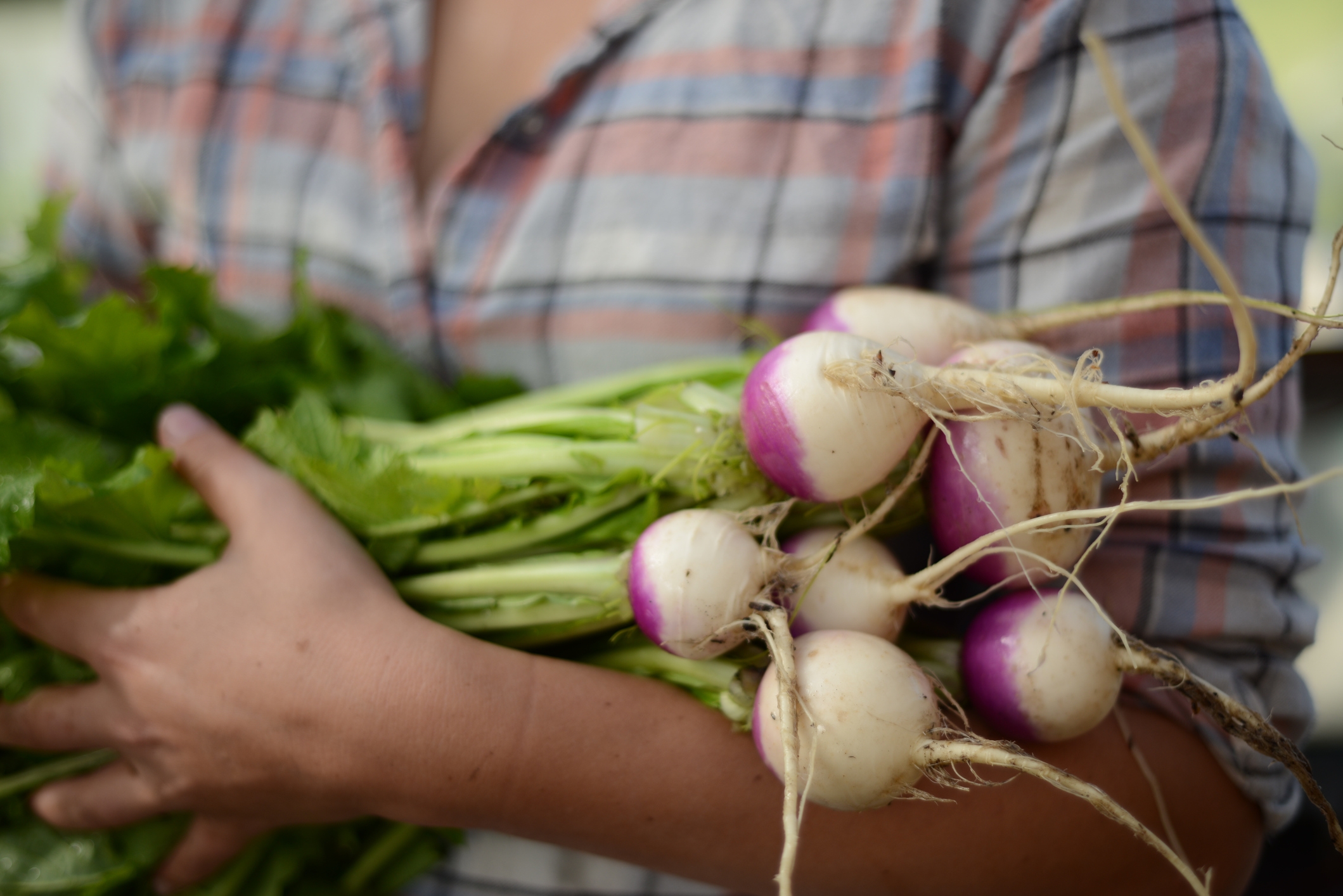Rutabaga
Rutabagas, often dubbed 'swedes' in other parts of the world, are root vegetables with a rich, earthy flavour and a striking golden hue. Somewhere between a turnip and a cabbage in taste, these hardy vegetables have been embraced by Alberta's farmers and chefs alike, showcasing the versatility of the province's produce.

About
Rutabagas are cruciferous vegetables with a bulbous shape, typically displaying a purple-tinged skin fading to a creamy hue near the root. Inside, their flesh is golden and somewhat granular. These cold-resistant plants thrive in Alberta's climate, making them a staple in many fall and winter gardens. With a growing period that's longer than turnips, they're often harvested after the first frost, which helps in sweetening their taste.
History
The rutabaga has its origins in Scandinavia or Russia, believed to be a hybrid between a turnip and wild cabbage. Its journey to Alberta likely mirrors patterns of immigration, brought to the region by settlers who recognized its resilience in colder climates. Over time, the rutabaga became a staple in Albertan households, especially during the colder months when fresh produce was sparse. Its ability to be stored for extended periods further solidified its status in Alberta's agricultural and culinary scenes.
Ways To Cook
Rutabagas are culinary gems, offering depth to a variety of dishes. They're often peeled, diced, and added to hearty stews or soups, mingling with other root vegetables and local meats. Mashed rutabaga, seasoned with butter, salt, and a touch of brown sugar, is a traditional side dish that complements many winter meals.
For a modern twist, chefs might roast rutabagas with herbs like rosemary or thyme, or even blend them into gratins, pies, or purees. Their slightly peppery flavour can also shine in pickled preparations or as raw additions to salads.
As Alberta's culinary scene grows and diversifies, the humble rutabaga continues to showcase its versatility, echoing the province's rich agricultural heritage.
Some Of Our Favourite Videos
Alberta Rutabaga Producers
Hidden Valley Garden
About this producerFoods from this producer:
-
- Vegetables
Lettuce
-
- Vegetables
- Leafy Greens
Kale
-
- Vegetables
Chard
-
- Vegetables
- Roots and Tubers
Beet
-
- Vegetables
- Roots and Tubers
Carrots
-
- Vegetables
- Cabbage Family
Cabbage
-
- Vegetables
Green Bean
-
- Vegetables
Potatoes
-
- Vegetables
Pea
-
- Vegetables
- Roots and Tubers
Rutabaga
-
- Vegetables
Pumpkin
-
- Vegetables
Zucchini
-
- Herbs & Spices & Flavourings
- Culinary Herb
Dill
-
- Herbs & Spices & Flavourings
- Culinary Herb
Chives
-
- Fruit
Saskatoon Berry
-
- Fruit
Raspberry
-
- Fruit
Chokecherry
-
- Fruit
Black Currant
-
- Fruit
Rhubarb
